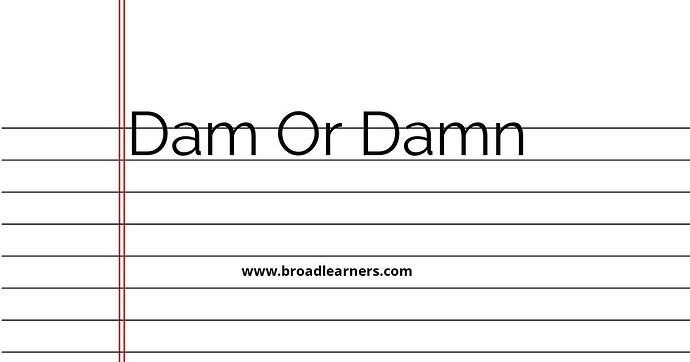'Dam' and 'damn' are commonly confused words in English grammar. Understanding the difference between 'dam' and 'damn' is important to use them correctly in written and spoken English.
'Dam' is a noun that refers to a barrier built across a river or stream to control the flow of water. It is also used as a verb to mean the act of creating a dam.
'Damn' is an adjective or interjection that is used to express anger, frustration, or strong disapproval.
Let's take a closer look at the meanings and usage of 'dam' and 'damn'.
| 'Dam' | 'Damn' |
|---|---|
| The word 'dam' is a noun that refers to a barrier built to control the flow of water. | The word 'damn' is an adjective or interjection used to express anger or frustration. |
|
|
To remember the difference between 'dam' and 'damn', it can be helpful to think of 'dam' as a physical structure used to control water flow, while 'damn' is a word used to express strong emotions or disapproval.
Here are some examples of correct usage:
- The engineers built a dam to control the river's flow.
- She was damn excited about her promotion.
- He cursed under his breath, 'Damn this traffic!'
- They built a dam to create a reservoir.
Remembering the correct usage of 'dam' and 'damn' will improve your grammar and communication skills.
